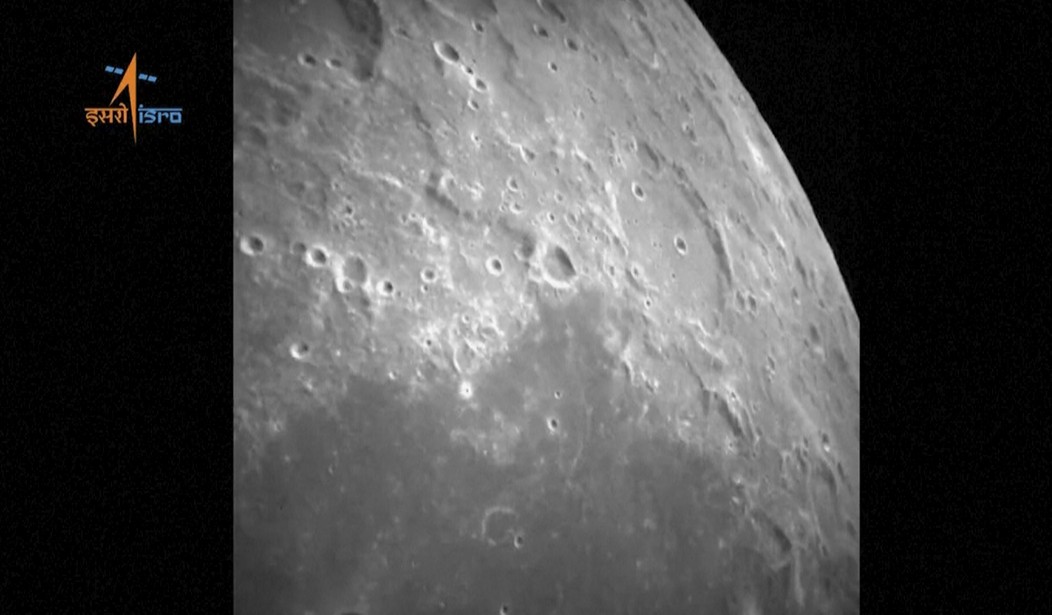On Wednesday, India became only the fourth country to achieve a soft landing on the Moon when its Chandrayaan-3 spacecraft touched down near the South Pole of the moon — the first landing in the South Polar region in history.
India’s President Narendra Modi took the opportunity to toot India’s horn.
“On this joyous occasion…I would like to address all the people of the world,” he said. “India’s successful moon mission is not just India’s alone. This is a year in which the world is witnessing India’s G20 presidency. Our approach of one Earth, one family, one future is resonating across the globe.
“This human-centric approach that we present and we represent has been welcome universally. Our moon mission is also based on the same human-centric approach,” Modi added. “Therefore, this success belongs to all of humanity, and it will help moon missions by other countries in the future.”
The first image of the Moon's surface from Chandrayaan-3 pic.twitter.com/lZUrulH0yv
— Latest in space (@latestinspace) August 24, 2023
India’s success contrasted with the failure of Russia’s lunar lander Luna-25, which crashed into the moon two days previously. Indeed, India’s achievement showed how far Russia’s space program has fallen in the last few decades.
Landing at the moon’s South Pole is particularly challenging, given the large number of craters and trenches that make it such a difficult landing zone. The South Pole also receives a lot less direct sunlight, making solar-powered robots work a lot harder. At 230 degrees below zero, it’s also a challenge for any robot lander to survive.
So India managed a feat no other great space power has succeeded at. But why is the South Pole so coveted as a landing area? Miles O’Brien of PBS explains.
If you have water, you have H2O, you can certainly sustain life, obviously. But you can also create electrical energy, and H and O are actually rocket fuel. So you could conceivably fuel up rockets to go back to Earth, or perhaps even go farther beyond. So, with all that in mind, people who want to explore space find this an intriguing spot as a launching pad, if you will.
Indeed, the riches of the universe are within our grasp if we can find a way to cut the cost of space travel down to a few dollars a pound instead of a few thousand dollars a pound. Mining, zero-G manufacturing, and a host of other exciting commercial possibilities await us.
Today, the per-kilogram cost of a Falcon 9 launch is $1,520 whereas it was $10,000 per kilogram in 2009. The lower that cost goes, the easier it will be to launch platforms to asteroids, to build lunar bases that will form the next generation of space exploration — the practical exploitation of resources on the moon and beyond.
The Chandrayaan-3 mission to land in the South polar region of the moon cost $25 million, a pittance compared to U.S. space expenditures. But the Indian space program isn’t a welfare program for gigantic corporations like Lockheed and McDonnell Douglas. It is deadly serious about the commercial exploitation of space.
Miles O’Brien:
And I think that is something that India has discovered and has made a huge investment really in the past three years too. It has unleashed private enterprise. And there are now about 140 small space start-ups in India attracting several hundred million dollars in investment. So what India has discovered is that not only does it give you that soft power prestige throughout the world.
Space is a huge wealth generator. And as things get smaller and cheaper in space, you can imagine using space to provide great value to people out here on Earth, not just to go and plant a flag on Mars, but to help farmers plant crops better, to understand climate change, to better understand our weather patterns.
India has stolen a march on the U.S. by landing in the South Polar region of the moon. The question isn’t whether we are able to catch up. It’s a question of national will whether we want to.










Join the conversation as a VIP Member